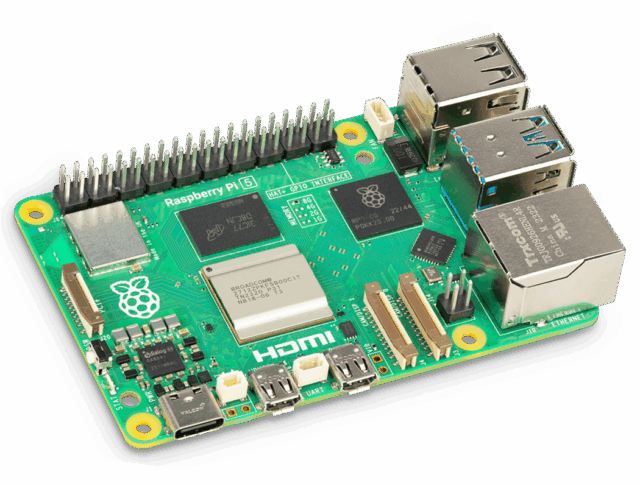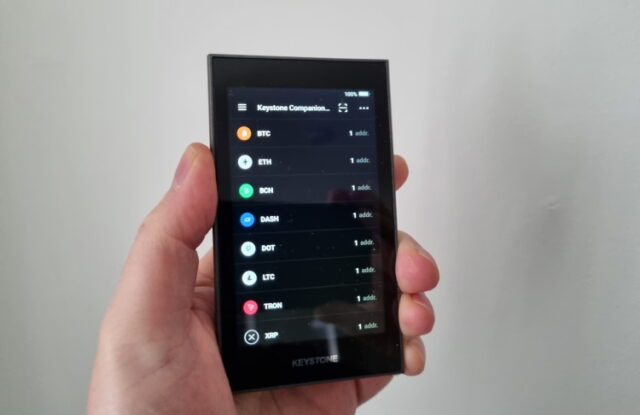In the world of cryptocurrencies, many people are interested in mining, but not everyone wants to invest in large, noisy, and expensive mining rigs. Raspberry Pi–based mining offers an alternative, cost-effective, and energy-efficient solution, especially for those who want to learn how mining works without necessarily aiming for high profits.
In this detailed guide, I’ll show you how to build a cryptocurrency mining rig using a Raspberry Pi, what configuration you’ll need, what software options you can choose from, what costs to expect, and finally—whether it’s worth it in reality.
What is a Raspberry Pi, and why is it suitable or unsuitable for mining?
The Raspberry Pi is a credit card–sized, extremely inexpensive, low-power single-board computer originally designed for educational purposes, but today it is used in countless hobby and industrial projects. It can be suitable for mining in certain cases, but due to its limited processing power, it is only ideal for specific tasks.
Advantages
-
Low power consumption (5–15 watts)
-
Small physical footprint
-
Low initial cost
-
Stable, long-term operation
-
Ideal for educational and testing purposes
Disadvantages
-
Weak computational capacity
-
Limited profitability for mining
-
Typically effective only as an auxiliary device
What can a Raspberry Pi do in the crypto world?
-
CPU-based mining (for testing purposes only)
-
Controlling ASIC mining machines
-
Running full nodes (e.g., Bitcoin node)
-
Operating a Lightning Network node
-
Acting as a Proof-of-Stake staking node (for certain coins)
-
Farming and running a node in Chia mining
Which cryptocurrencies can be mined with a Raspberry Pi?
Monero (XMR)
Monero uses a CPU-friendly algorithm (RandomX), so it is theoretically mineable with a Raspberry Pi. In practice, the hashrate is so low that you cannot expect meaningful revenue. However, it’s excellent for educational purposes.
Litecoin (LTC) and Dogecoin (DOGE)
These cryptocurrencies use the Scrypt algorithm, which requires a USB ASIC miner. In this case, the Raspberry Pi functions as the controller. Profits are low, but a working system can be built.
Chia (XCH)
The Chia network uses storage-based mining (Proof of Space and Time). A Raspberry Pi can act as both farmer and node, but the “plotting” process requires a high-performance machine and significant SSD capacity.
Other decentralized networks (Helium, Filecoin, Sia)
A Raspberry Pi is excellent for running nodes in these decentralized data storage and IoT networks.
Bitcoin (BTC)
You can’t effectively mine Bitcoin directly with a Raspberry Pi, but using a USB ASIC miner with the Pi as the controller, you can create a small, functional mining setup.
Hardware configuration — what you’ll need
Basic hardware list
| Item | Recommended model | Average price (HUF) |
|---|---|---|
| Raspberry Pi | 4 Model B (min. 4 GB RAM) | 30,000 – 60,000 |
| Power supply | 5V 3A USB-C | 5,000 |
| MicroSD card | 32–128 GB Class 10 | 3,000 – 10,000 |
| Cooling and case | Fan + heatsink | 3,000 – 8,000 |
| Powered USB hub | 4–7 ports | 6,000 – 12,000 |
| USB ASIC miner | e.g., GekkoScience, FutureBit Moonlander | 40,000 – 120,000 |
| External SSD (for Chia) | 1–2 TB | 30,000 – 50,000 |
Total startup cost
-
Simple CPU mining: ~50,000 – 80,000 HUF
-
With ASIC mining: ~150,000 – 250,000 HUF
Software and step-by-step installation
Installing the Raspberry Pi operating system
First, download the official Raspberry Pi OS and write the image to the microSD card using a tool like Raspberry Pi Imager. Insert the card into the Pi and boot up. On the first startup, configure network settings, set passwords, and update the system.
System updates and package installation
After booting, install all available updates and packages required for compiling and running mining software, such as development libraries, SSL, network, and JSON parsing tools.
Installing mining software
-
For ASIC-based Bitcoin mining:
Use CGMiner, a common choice for USB ASIC miners. Download the source code, compile it for Raspberry Pi, and configure it with your mining pool details (e.g., SlushPool) and account credentials. -
For CPU-based Monero mining:
Use XMRig, downloaded and compiled from source. Configure it with your chosen Monero pool address and wallet address.
Performance and ROI
Expected performance
| Cryptocurrency | Raspberry Pi performance | ROI potential |
|---|---|---|
| Bitcoin (with USB ASIC) | 300 GH/s – 1 TH/s | Minimal in the long term |
| Monero (CPU only) | 0.5 – 1 H/s | Virtually none |
| Litecoin/Dogecoin (with ASIC) | 300 – 600 MH/s | Hobby-level |
| Chia (as farmer) | Depends on storage | Small long-term yield |
ROI calculation
A basic USB ASIC–equipped setup costs about 150,000 HUF, with monthly electricity costs around 300–500 HUF. Depending on pool performance and market prices, monthly revenue may be 1,000–3,000 HUF, meaning ROI can take 4–5 years at best—highly dependent on market conditions.
Alternative Raspberry Pi uses in the crypto space
A Raspberry Pi won’t be the heart of your next mining farm, but it’s excellent for other blockchain-related roles:
-
Running a Bitcoin full node (e.g., Umbrel, MyNode)
-
Running a Lightning Network node (e.g., RaspiBlitz)
-
Acting as a staking node in PoS networks
-
Serving as a Chia farmer node
-
Supporting decentralized storage (Filecoin, Sia)
Future outlook — the Raspberry Pi’s role in crypto mining
As proof-of-work mining becomes less dominant, the Raspberry Pi’s real value may lie in supporting the infrastructure of decentralized blockchain ecosystems:
-
Hosting Proof-of-Stake staking nodes
-
Operating decentralized storage systems
-
Powering low-energy, eco-friendly blockchain projects
-
Providing infrastructure for education, experimentation, and testing
In the long term, the Raspberry Pi is more likely to be a tool for democratizing decentralized networks than a classic profitable mining machine.
Image(s) used in this article are either AI-generated or sourced from royalty-free platforms like Pixabay or Pexels.
Did you enjoy this article? Buy me a coffee!






